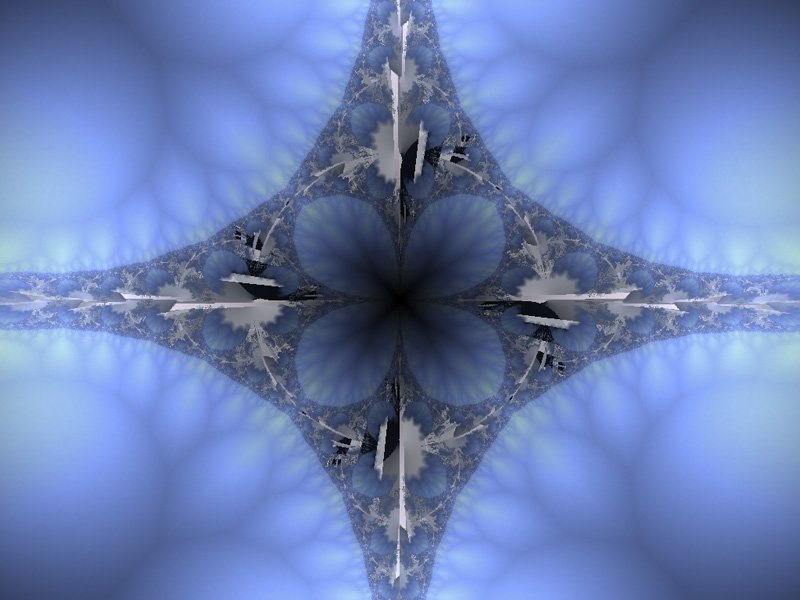Bifurcations
However there's an unexpected problem. I'm finding that I can't get the kind of results shown in these clips without using some kind of mirror, kaleidoscope, or similar effect. I get the best results by automating the scale parameters of IscHypnotic. This is contrary to what I know about analog feedback. For analog feedback all I typically need is:
1. Looping: in analog this is created by pointing the video camera at the monitor, but in digital the equivalent is e.g. an alpha mixer, luma key, or chroma key with one of its inputs looped back from the output.
2. Decay offset: in analog this is usually accomplished with a TBC, but in digital various types of color or luma shifts can be substituted.
3. Motion: in analog, the motion typically comes from moving the camera, but in digital a simple pan/spin/zoom should in theory work.
But when I try digital setups this simple, I don't get interesting results unless I make the motion component much more complicated. This isn't necessarily bad, but it does give the output a characteristic look (radial, or at least symmetrical). In the case of IscHypnotic it also introduces significant pixelization, which is one of the main objections to digital feedback.
Another interesting result is enclosed below. The FFRend project that generated this image always converges on the state shown. Perturb it all you like, and it either breaks completely or converges again. The branches are a perfect demonstration of the role of bifurcation in natural systems. If you ever had any doubts that nature is chaotic, this should dispel them.

But why does this particular project do it? I don't have any other projects that create this shape, and I can't get it to work without IscHypnotic either. It's all very puzzling. What is the role of the mirror/kaleidoscope/hypnotic in all this? The "Fireplace" clip suggests that there might be a way around it.
Examine the texture in the "Etched Chaos" clip. At some points it resembles feathers, or scales. Again it's clearly organic, and reminiscent of Mandelbrot and other fractals. There's a critical tipping point where it starts "budding" like a plant, but then it quickly exhausts itself and the moment slips away. Could it be possible to stabilize it?
Sensitivity to initial conditions is just the nature of chaos. I remember from the analog days that the feedback setups were absurdly sensitive. It was fussy work that required patience and a steady hand, and some people were better at it than others. There were magical cameras, magical monitors, even magical cables. Sometimes two cameras of the exact same model behaved drastically differently for no obvious reason. Nonetheless people managed to stabilize intense bifurcations for minutes or hours.
Back in the day, analog feedback purists often told me that I would never get similar results digitally. Electric Sheep was an interesting counter-example, but wasn't directly comparable since it's not even close to being a real-time process. I always held that it was just a question of time, and that parallel processing and Moore's law would eventually catch up. All of these new projects run at 30 FPS at XGA resolution on an i7 PC. The results convince me (and some of my most hard-headed analog purist friends) not only that it's possible to convincingly emulate analog feedback in real time, but that digital feedback has the potential to exceed analog feedback in terms of aesthetic variety.

No comments:
Post a Comment